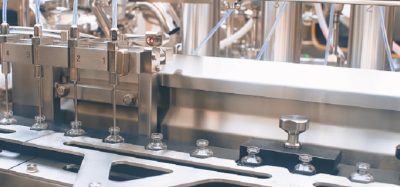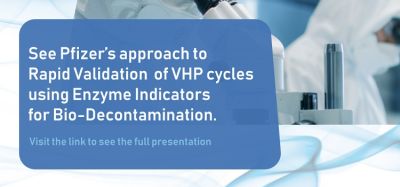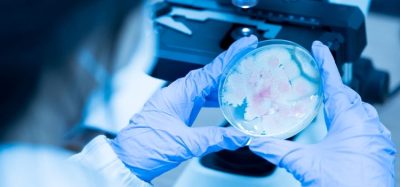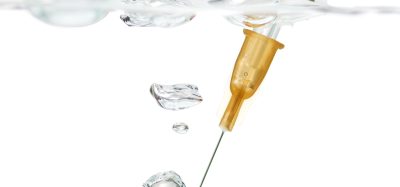Article 5: The implementation of rapid microbiological methods
Posted: 1 November 2010 |
This is the fifth in a series of articles on rapid microbiological methods that will appear in European Pharmaceutical Review during 2010. In my previous four articles, I have provided an overview of the benefits of rapid microbiological methods (RMMs) as compared with conventional methods, validation strategies and regulatory perspectives on the implementation of RMMs, especially from the US FDA and the European Medicines Agency. Some regulatory authorities rely on the published literature as a means of staying current with regard to new technologies that are being introduced, in addition to which companies are implementing these technologies in their manufacturing facilities.
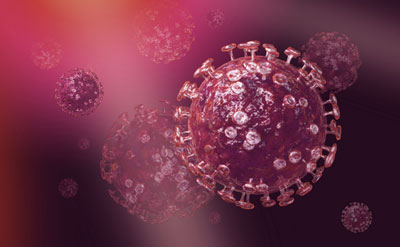

This is the fifth in a series of articles on rapid microbiological methods that will appear in European Pharmaceutical Review during 2010. In my previous four articles, I have provided an overview of the benefits of rapid microbiological methods (RMMs) as compared with conventional methods, validation strategies and regulatory perspectives on the implementation of RMMs, especially from the US FDA and the European Medicines Agency. Some regulatory authorities rely on the published literature as a means of staying current with regard to new technologies that are being introduced, in addition to which companies are implementing these technologies in their manufacturing facilities.
As a matter of fact, this point was discussed during the 2009 PDA Forum with European Regulators on Implementing Rapid Microbiology Methods. During the conference, Paul Hargreaves (Technical Manager, UK Medicines and Healthcare Products Regulatory Agency; MHRA) stated that what the regulators would really like to see is a RMM publication in a refereed, scientific peer-reviewed journal. He explained that presentations to inspectors or assessors from a RMM vendor’s marketing staff are not the best way to convince the agencies that their technology does what it is purported to do, and that marketing claims should be backed up by independent scientific research. Therefore, a paper published in a respected and refereed scientific reference is, as Hargreaves exclaimed, “going to grab the attention of the inspector.”
Published articles on RMM implementation will also grab the attention of companies that are ‘waiting in the wings’ because they do not want to be the first ones to validate a new microbiology method and work out all of the details from a scientific and regulatory standpoint. On the other hand, some firms believe that publishing their studies will result in a loss of their ‘competitive advantage’, in that other companies who wish to implement the same or similar technologies will be able to replicate the authors’ strategies. And the rest of us are somewhere in the middle! It is this author’s opinion that the more RMM publications that are introduced in the public domain, the more readily the information will be disseminated throughout the regulatory agencies, and this will make it easier and less burdensome for the industry to implement these technologies in the future. Fortunately, a number of excellent RMM papers have been published in peer-reviewed journals over the past two years, and I would like to highlight some of these in this article.
Rapid sterility testing
One area for rapid methods that has been gaining momentum is the sterility test. Companies are now beginning to implement alternative methods for the finished product sterility test as well as introduce new tech – nologies for sterility screening. One recent paper described the use of an ATP bioluminescence method coupled with microbial growth on a membrane filter that has been placed on the surface of solid microbiological media1. The use of solid media helped to overcome the challenges associated with using traditional liquid media due to potential difficulties associated with differentiating background noise from true microbial signals. The study evaluated a variety of 22 microorganisms, including seven ATCC strains and 15 production, site-specific isolates from environmental monitoring samples, bioburden, and sterility test failures. In order to consider the fact that contaminants of drug products are supposed to be in a more or less stressed state, the authors established a procedure to stress micro – organisms in a defined way and included these stressed microorganisms in a nutrient media evaluation. Stress was evoked by heat treatment, and nutrient starvation in the case of the sporulating bacteria. This stress effect, resulting in deceleration in growth, was experimentally confirmed based on growth curve analysis. The resulting data showed that Schaedler blood agar had the best growth promoting properties among the agars tested and will be used in the rapid sterility test with the incubation temperatures of 20 – 25°C and 30 – 35°C for aerobes, and 30 –35°C for anaerobic microorganisms.
A second paper compared the harmonised USP/EP/JP sterility test with a rapid, solid-phase cytometry rapid method with respect to the limits of detection for the presence of viable microorganisms in aqueous solutions at low inoculation levels2. Seven compendial micro – organisms were evaluated, including Clostridium sporogenes, Escherichia coli, Pseudomonas aeruginosa, Staphylococcus aureus, Bacillus subtilis, Aspergillus niger and Candida albicans, in addition to a Gram-positive anaerobe, Propionibacterium acnes. The number of viable organisms was estimated using the rapid method and the conventional sterility test method using most probable number methodology. The mean difference between the methods was computed and 95 per cent confidence intervals around the mean difference were estimated. The rapid method was found to be numerically superior and statistically non-inferior to the compendial (USP/EP/JP) sterility test with respect to the limits of detection for all micro-organisms evaluated.
Rapid endotoxin testing
Current bacterial endotoxin testing is performed by one of three methods based on the use of limulus amoebocyte lysate (LAL): the gel-clot, endpoint analysis and kinetic assays. One recent publication described the use of a portable rapid Endotoxin testing system for the analysis of biopharmaceutical samples such as raw materials and finished products3. The authors presented an overview of the validation studies performed on the rapid method and compared the results to the gel-clot test method in terms of presence or absence of endotoxin substances, ease of use, completion time, resource optimisation and sample volume. Miniaturisation of endotoxin testing by the rapid method allowed optimisation of testing procedures by reducing sample volume, analyst manipulations, accessory materials and turnover time, and by minimising the risk of exogenous contamination of the LAL reaction.
Real-time environmental monitoring
In the quest for implementing microbiology solutions that embrace Process Analytical Technology (PAT), the elimination of manual sampling and testing, and obtaining infor – mation about manufacturing processes in real-time, two peer-reviewed publications describe how one company evaluated a real-time environmental monitoring technology that simultaneously detects, sizes and enumerates both viable and non-viable particles. The first paper describes the assessment of the optical spectroscopy technology and conventional air sampling systems in a variety of cleanroom environments4. The data for the rapid method and the conventional particle counter followed a similar trend of increasing counts for both the 0.5 μm and the 5.0 μm total particles when sampling progressed from the most controlled area (Grade A) to the least controlled area (a loading dock open to the outside of the facility). Zero viable particle counts were observed for both the rapid method and the conventional air sampler when sampling the Grade A location. However, there was a trend for the rapid method to detect greater numbers of viable particles when monitoring all other sampling locations, especially those locations representing the least controlled environments. These results were most likely due to a combination of factors, including the rapid method’s ability to detect stressed or viable but non-culturable organisms, and higher collection efficiency (for 1-μm particles) as compared with the conventional air sampler.
The next paper is a follow-on study performed by the same authors5. They use the same real-time environmental monitoring technology to simultaneously and instantaneously detect and enumerate both viable and nonviable particles in a variety of filling and transfer isolator environments during an aseptic fill, transfer of sterilised components, and filling interventions. Continuous monitoring of three separate isolators for more than 16 hours and representing more than 28 cubic metres of air per isolator (under static conditions) yielded a mean viable particle count of zero (0) per cubic metre. No viable particles were detected during the manual transfer of sterilised components from transfer isolators into a filling isolator, and similar results were observed during an aseptic fill, a filling needle change-out procedure, and during disassembly, movement and reassembly of a vibrating stopper bowl. During the continuous monitoring of a sample transfer port and a simulated mousehole, no viable particles were detected; however, when the sampling probe was inserted beyond the isolator-room interface, the rapid method instantaneously detected and enumerated both viable and nonviable particles originating from the surrounding room. Data from glove pinhole studies showed no viable particles being observed, although significant viable particles were immediately detected when the gloves were removed and a bare hand was allowed to introduce microorganisms into the isolator.
Other rapid method publications In addition to the peer-reviewed papers I have summarised above, a number of nonpeer- reviewed articles and white papers have recently been published (in print and online) that demonstrate an increasing trend of rapid method validation and implementation within the pharmaceutical and biopharmaceutical industries. Topics include the use of nucleic acid and gene amplification technologies for the detection of microorganisms and the estimation of cell counts, the use of alternative technologies for the detection and identification of Mycoplasma, regulatory guidance and how to develop a return on investment justification for purchasing and implementing rapid micro – biological methods. The list of papers is too large to be replicated here; however, a comprehensive directory of more than 80 rapid method references has been assembled and is available online at http://rapidmicromethods.com, a new website dedicated to the advancement of rapid methods.
References
1. Gray, J.C.; Staerk, A.; Berchtold, M.; Hecker, W.; Neuhaus, G.; Wirth, A. (2010) Growthpromoting Properties of Different Solid Nutrient Media Evaluated with Stressed and Unstressed Micro-organisms: Prestudy for the Validation of a Rapid Sterility Test. PDA Journal of Pharmaceutical Science and Technology. 64(3): 249-263
2. Smith, R.; Von Tress, M.; Tubb, C.; Vanhaecke, E. (2010) Evaluation of the ScanRDI as a Rapid Alternative to the Pharmacopoeial Sterility Test Method: Comparison of the Limits of Detection. PDA Journal of Pharmaceutical Science and Technology. 64(4): 356-363
3. Jimenez, L.; Rana, N.; Travers, K.; Tolomanoska, V.; Walker, K. (2010) Evaluation of the Endosafe® Portable Testing System™ for the Rapid Analysis of Biopharmaceutical Samples. PDA Journal of Pharmaceutical Science and Technology. 64(3): 211-221
4. Miller, M.J.; Lindsay, H.; Valverde-Ventura, R.; O’Connor, M.J. (2009) Evaluation of the BioVigilant® IMD-A™, a novel optical spectroscopy technology for the continuous and real-time environmental monitoring of viable and nonviable particles. Part I: Review of the technology and comparative studies with conventional methods. PDA Journal of Pharmaceutical Science and Technology 63(3): 244-257
5. Miller, M.J.; Walsh, M.R.; Shrake, J.L.; Dukes, R.E.; Hill, D.B. (2009) Evaluation of the BioVigilant® IMD-A™, a novel optical spectroscopy technology for the continuous and real-time environmental monitoring of viable and nonviable particles. Part II: Case studies in environmental monitoring during aseptic filling, intervention assessments and glove integrity testing in manufacturing isolators. PDA Journal of Pharmaceutical Science and Technology 63(3): 258-282
About the Author
Dr. Michael J. Miller
Dr. Michael J. Miller is an inter nationally recognised microbiologist and subject matter expert in pharmaceutical micro – biology and the design, validation and imple mentation of rapid microbiological methods. He is currently the President of Microbiology Consultants, LLC (http://microbiologyconsultants.com). In this role, he is responsible for providing scientific, quality, regulatory and business solutions for the pharmaceutical industry and suppliers of new microbiology technologies. Over the past 22 years, Dr. Miller has held numerous R&D, manufacturing, quality, consulting and business development leadership roles at Johnson & Johnson, Eli Lilly and Company, Bausch & Lomb, and Pharmaceutical Systems, Inc. Dr. Miller has authored over 100 technical publications and presentations in the areas of rapid microbiological methods, PAT, ophthalmics, disinfection and sterilisation, is the editor of PDA’s Encyclopedia of Rapid Microbiological Methods, and is the owner of http://rapidmicromethods.com, a new website dedicated to the advancement of RMMs. He currently serves on a number of PDA’s programme and publication committees and advisory boards, and is co-chairing the revision of PDA Technical Report #33: Evaluation, Validation and Implementation of New Microbiological Testing Methods. Dr. Miller holds a Ph.D. in Microbiology and Biochemistry from Georgia State University (GSU), a B.A. in Anthropology and Sociology from Hobart College, and is currently an adjunct professor at GSU. He was appointed the John Henry Hobart Fellow in Residence for Ethics and Social Justice, awarded PDA’s Distinguished Service Award and was named Microbiologist of the Year by the Institute of Validation Technology (IVT).
Issue
Related topics
Microbiology, rapid endotoxin testing, Rapid Microbiological Methods (RMMs), rapid sterility testing



